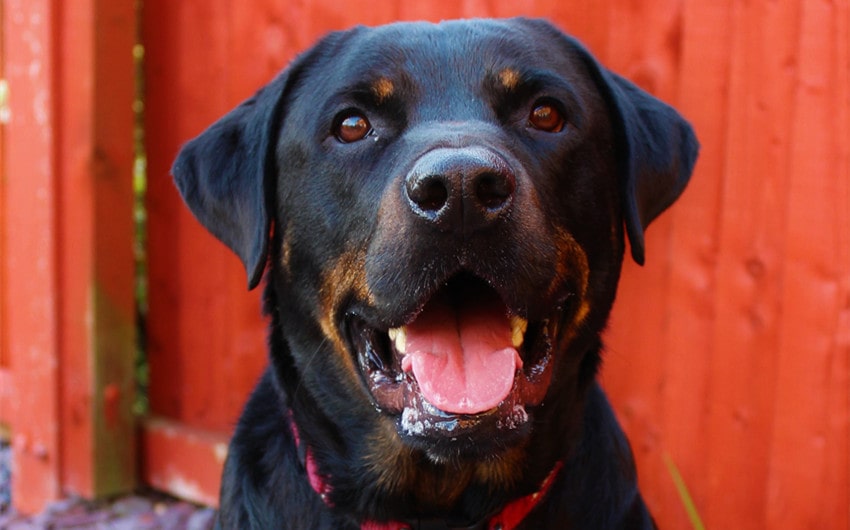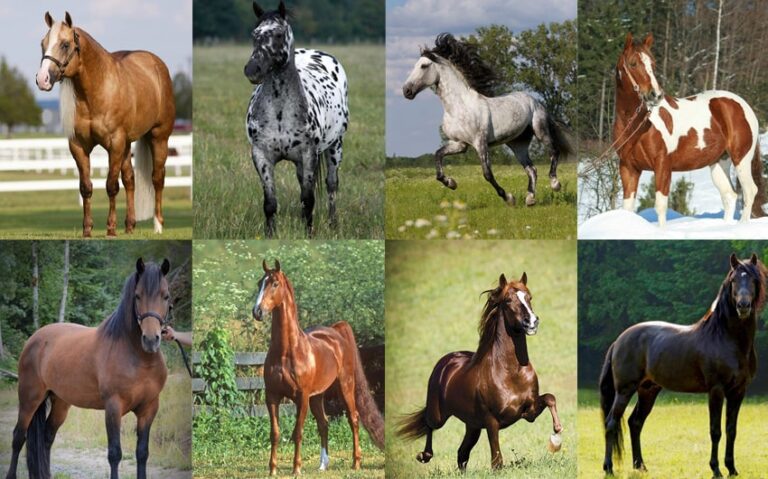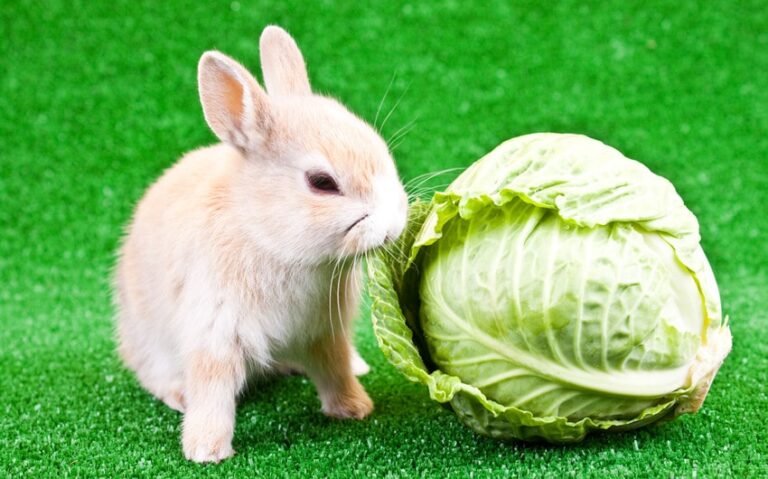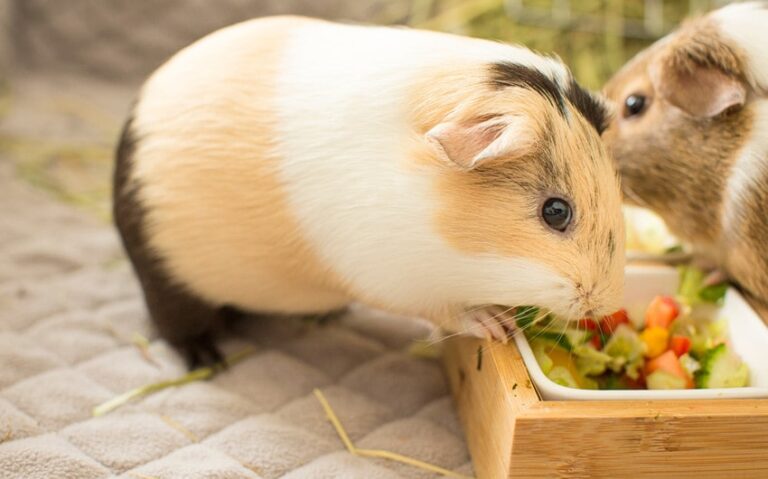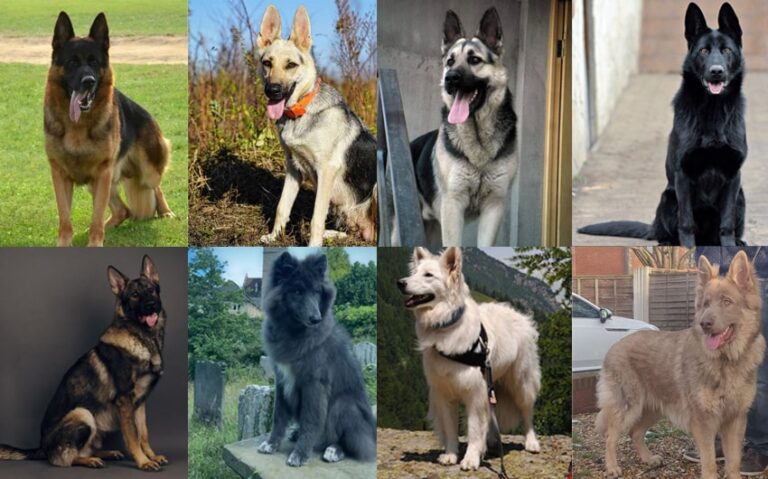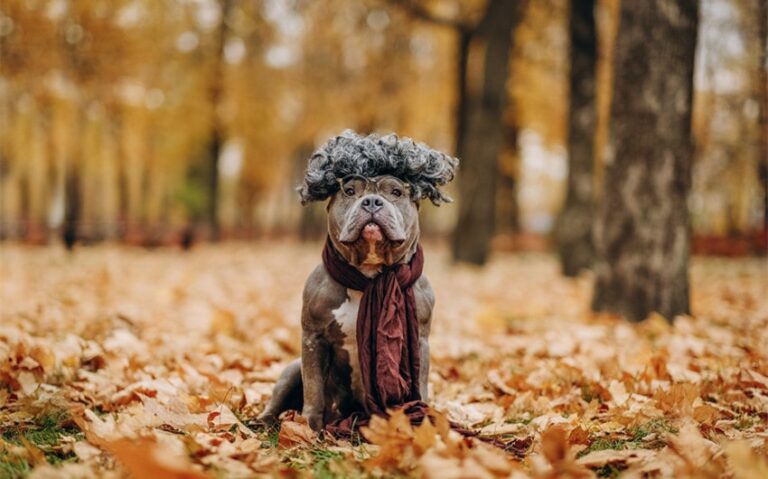Doberman Rottweiler Mix: The Ultimate Guide to This Loyal Breed
Looking for a loyal, protective, and energetic dog to join your family? The Doberman Rottweiler mix might be just what you’re looking for. This hybrid dog blends the strength and intelligence of two impressive breeds, creating a companion that’s both loving and fierce when it comes to guarding its home.
Whether you’re seeking a playmate for your kids or a vigilant protector for your property, this mix brings a unique balance of affection and security. In this article, we’ll explore everything you need to know before welcoming one into your life, from personality traits to care tips.
Origin and History

Image source: Pinterest
Doberman Breed History
The Doberman Pinscher was first developed in the late 19th century by a German tax collector named Karl Friedrich Louis Dobermann. Dobermann sought a dog that could serve as a loyal companion and fearless protector during his often dangerous rounds as a tax collector.
To achieve this, he carefully bred several dog types, including Rottweilers, Greyhounds, and German Pinschers, resulting in the sleek and powerful Doberman we know today. The breed quickly gained popularity for its intelligence, agility, and protective instincts, becoming a favored choice for police, military, and security roles.
Rottweiler Breed History
The Rottweiler’s roots date back to ancient Rome, where they were used as working dogs, herding cattle and protecting them from predators. As the Roman Empire spread, so did the Rottweiler’s influence, eventually settling in the German town of Rottweil, which gave the breed its name.
In the Middle Ages, Rottweilers were known as “butcher’s dogs,” as they were often used to pull carts laden with meat to market. Over time, they transitioned into strong guard dogs, praised for their loyalty, strength, and endurance.
The Doberman Rottweiler Mix
The Doberman Rottweiler mix, often referred to as the “Rotterman,” is a relatively modern hybrid, blending the traits of these two powerful breeds. Although not recognized by major kennel clubs as an official breed, the combination of Doberman and Rottweiler has become increasingly popular due to their complementary characteristics.
Both parent breeds share a history of guarding and protecting, making the mix a reliable choice for families looking for a courageous yet affectionate companion. The hybrid’s development likely stemmed from a desire to create a well-rounded dog that balances the Doberman’s intelligence and sleek appearance with the Rottweiler’s strength and calm demeanor.
Appearance and Size
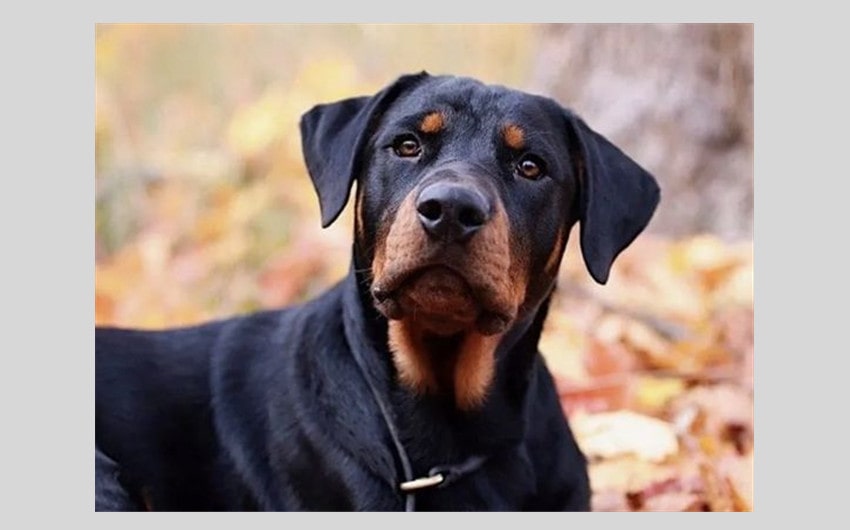
Image source: Pinterest
The Doberman Rottweiler mix, often called a “Rotterman,” typically inherits a blend of physical traits from both parent breeds, resulting in a strong, athletic, and striking appearance. Since this is a hybrid breed, individual dogs can vary, but there are common characteristics that most Doberman Rottweiler mixes share.
Size and Build
The Doberman Rottweiler mix is a large, muscular dog, often standing between 24 to 28 inches tall at the shoulder and weighing anywhere from 70 to 110 pounds. Their strong build comes from the Rottweiler side, giving them a robust and powerful appearance.
The Doberman influence lends a sleek and athletic frame, giving the mix a more streamlined look compared to the bulkier Rottweiler. Overall, the Rotterman has a balanced, well-proportioned body, making them both imposing and agile.
Coat Type and Colors
The coat of a Doberman Rottweiler mix is typically short, dense, and smooth, with a natural sheen that reflects their healthy, athletic condition. Their coat is low-maintenance in terms of grooming, though regular brushing is recommended to keep it clean and shiny.
When it comes to colors, the Doberman Rottweiler mix often displays the striking black and tan color pattern seen in both parent breeds. This includes a primarily black coat with distinctive tan markings on the face, chest, and legs, similar to the Rottweiler.
However, depending on genetics, some dogs may have additional colors like brown, rust, or even a slight hint of red. Rarely, a full brown or black coat may occur, but the traditional black and tan combination is most common.
Facial Features
The face of a Doberman Rottweiler mix often combines the best of both breeds. They typically have a broad, well-defined head with a strong jawline, which contributes to their alert and confident expression. Their eyes are usually almond-shaped, dark, and full of intelligence and focus.
The mix may have slightly rounded or cropped ears, depending on whether the Doberman or Rottweiler genes are more dominant. Either way, their ears contribute to their alert, watchful appearance.
Tail and Ears
A Doberman Rottweiler mix can inherit a tail either from the Doberman, which may be docked, or the Rottweiler, which is often left natural and thick. If left natural, their tails are long and carried with pride. In some regions, tail docking may still be practiced, but many owners prefer to leave the tail intact, allowing the dog’s expressive tail to show its mood and excitement.
In terms of ears, the Doberman’s erect, cropped ears may appear, or the dog may inherit the Rottweiler’s natural, floppier ears. Whether cropped or not, their ears play an important role in giving them that alert, guard-dog look.
Overall Expression
The Doberman Rottweiler mix has a confident, alert, and commanding presence, often exuding a sense of power and readiness. Their eyes are sharp and expressive, reflecting their intelligence and loyalty. Despite their strong and intimidating appearance, many owners report that their Doberman Rottweiler mix has a calm and approachable demeanor, especially around familiar faces.
Temperament and Personality
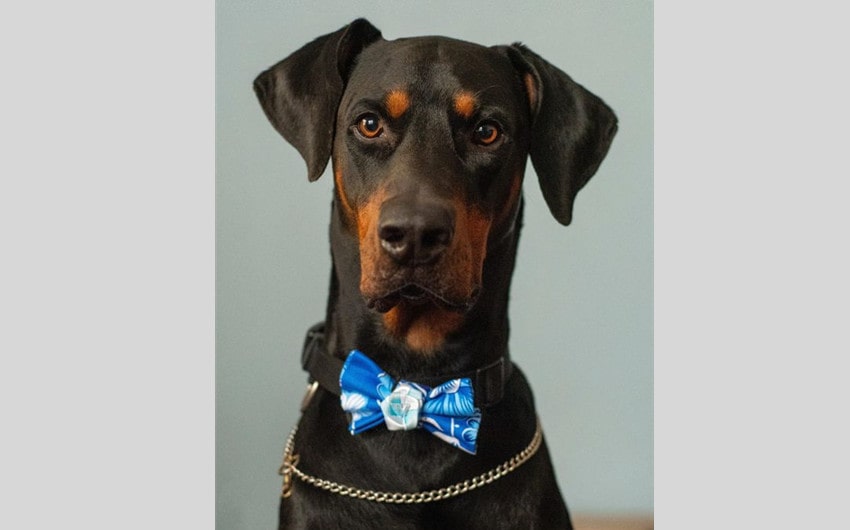
Image source: Pinterest
The temperament of a Doberman Rottweiler mix is shaped by the combination of two intelligent and loyal breeds known for their protective instincts. While individual personality traits can vary based on the dominant genes of each parent, certain characteristics are commonly seen in this hybrid.
1. Loyal and Protective
One of the most defining traits of the Doberman Rottweiler mix is their unwavering loyalty. Both the Doberman and the Rottweiler are bred to be protectors, and this mix naturally inherits those strong guarding instincts. They are highly devoted to their family and home, often forming strong bonds with their owners and being particularly vigilant in keeping them safe.
These dogs are naturally watchful and will quickly alert you to any potential intruders, making them excellent guard dogs. However, they need proper training to ensure that their protective instincts are well-managed and don’t lead to unnecessary aggression.
2. Affectionate and Loving
Despite their tough exterior, Doberman Rottweiler mixes can be surprisingly affectionate. They are known to be loving and gentle with family members, particularly when raised in a caring environment.
They often enjoy being close to their humans and are known to seek attention and affection, making them great companions for those looking for a loyal and cuddly pet. While they can be playful and social with their immediate family, they may be more reserved or aloof around strangers.
3. Confident and Brave
Both parent breeds are known for their confidence, and the Doberman Rottweiler mix shares this trait. These dogs exude self-assurance, which is why they make such reliable protectors. They are typically calm and composed, not easily rattled by new situations or environments.
However, their bravery can sometimes translate into a stubborn or independent streak, which means consistent training is essential to maintain control and ensure they remain well-behaved.
4. Socialization Needs
Early socialization is critical for the Doberman Rottweiler mix to help them develop into well-rounded dogs. Without it, their natural guarding instincts can make them overly cautious or even aggressive toward strangers or other animals. Exposing them to a variety of people, places, and experiences while they are young can help curb these tendencies, ensuring they grow into confident, well-adjusted adults. Socializing with other dogs is also important, as they can sometimes be dominant around other pets.
5. Energy Levels
This breed mix tends to have high energy levels, thanks to their active and working dog lineage. They enjoy regular exercise and mental stimulation, which helps keep them happy and balanced. Without enough activity, they may become bored or develop destructive behaviors, so they thrive in homes that can provide them with plenty of physical and mental outlets.
Trainability and Intelligence
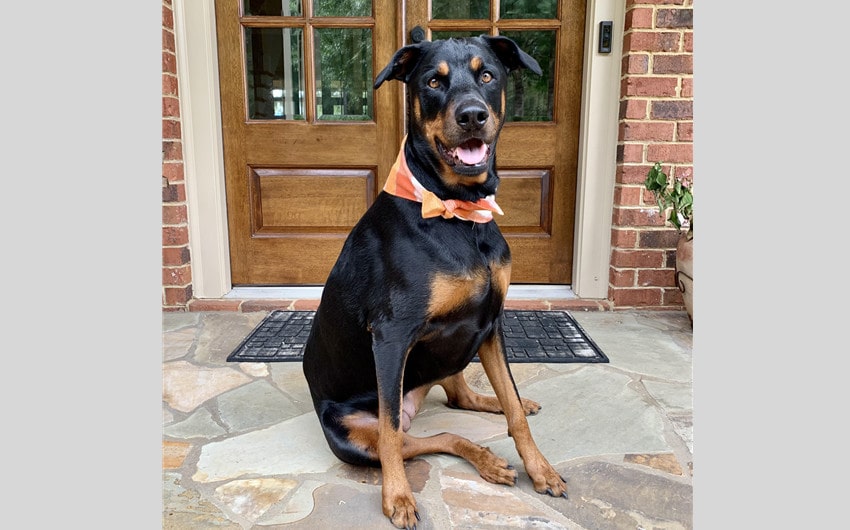
Image source: Reddit
The Doberman Rottweiler mix is an intelligent and highly trainable dog, owing to the strong working backgrounds of both parent breeds. However, this intelligence comes with its own set of challenges, as they can also be independent and stubborn if not trained properly.
Highly Intelligent
Both the Doberman and the Rottweiler are known for their sharp minds, and this mix is no different. The Doberman Rottweiler mix is quick to learn and can grasp new commands with ease. Their intelligence makes them capable of advanced training, and they excel in obedience, agility, and even service work. This makes them suitable for experienced dog owners who are familiar with training high-energy and intelligent dogs.
Eager to Please, but Independent
While this mix is generally eager to please their owners, they can also show independent thinking. This is where their Rottweiler side may come through, as Rottweilers can sometimes exhibit a more laid-back or stubborn nature. As a result, training may require patience and consistency, especially when it comes to reinforcing good behaviors. With the right approach, these dogs can quickly become well-mannered and responsive.
Training Tips for Success
Training a Doberman Rottweiler mix is most successful when it begins at an early age. Early training helps to establish boundaries and prevent undesirable behaviors, like guarding tendencies from becoming overly aggressive. Here are a few key training tips for this breed:
- Start Early: Begin training and socialization as early as possible to set the foundation for good behavior. Expose them to different environments, people, and other dogs to make them well-adjusted adults.
- Positive Reinforcement: This breed responds best to positive reinforcement methods, such as treats, praise, and play. Using harsh punishments or aggressive training techniques can lead to fear or aggression, so it’s important to be patient and reward their good behavior.
- Consistent Leadership: The Doberman Rottweiler mix needs a confident and consistent leader. They thrive when their owner sets clear rules and expectations. Without strong guidance, their natural independence can make them difficult to control.
- Mental Stimulation: Because of their intelligence, it’s important to keep them mentally engaged. Providing puzzle toys, interactive games, or agility courses can help keep their minds sharp and prevent boredom, which can lead to destructive behaviors.
Obedience and Guard Dog Training
Given their protective nature, it’s important to focus on obedience training to ensure they know how to react appropriately in different situations. Teaching them basic commands like sit, stay, and come is essential, but advanced training may be necessary if they will be used as a guard dog. They should be trained to distinguish between real threats and normal social situations, helping prevent them from becoming overly suspicious or reactive.
Challenges in Training
While intelligent and responsive, the Doberman Rottweiler mix can also be headstrong. They may try to push boundaries or ignore commands if they sense inconsistency from their owner. That’s why consistent training, clear expectations, and regular reinforcement are key to raising a well-behaved and obedient dog.
Exercise and Energy Levels
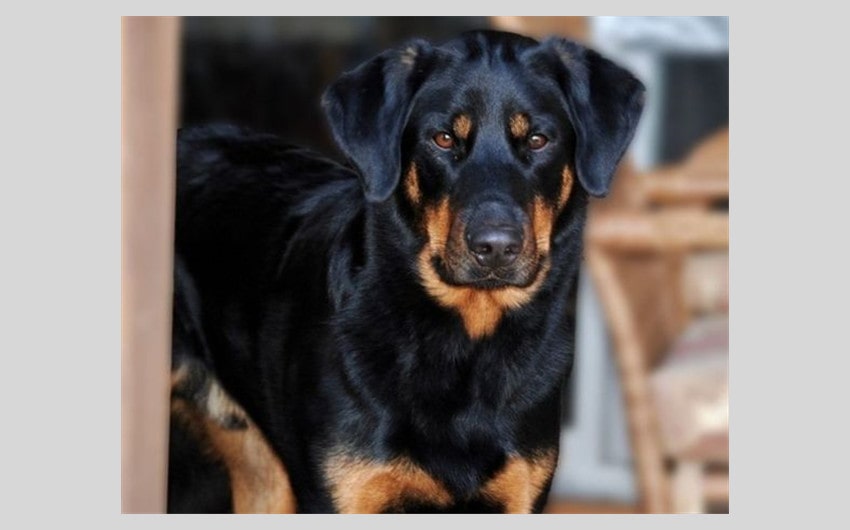
Image source: Pinterest
The Doberman Rottweiler mix is a highly energetic and active breed that thrives on regular physical activity and mental stimulation. Both the Doberman and Rottweiler are working dogs with strong backgrounds in guarding and protection, so it’s no surprise that their mix inherits a strong need for exercise.
Without adequate outlets for their energy, this mix can become restless or even develop behavioral issues, such as chewing, barking, or digging.
Daily Exercise Requirements
The Doberman Rottweiler mix requires at least 60 to 90 minutes of exercise every day. This can be a combination of brisk walks, runs, and vigorous play sessions. Due to their high energy levels, they are best suited for active families or individuals who enjoy outdoor activities like hiking, running, or cycling.
A large, secure yard where they can roam and play freely is ideal, but if you live in an apartment or small home, you will need to be committed to providing them with daily outdoor exercise.
Mental Stimulation
In addition to physical exercise, the Doberman Rottweiler mix needs mental stimulation to stay happy and well-behaved. This breed mix is highly intelligent, so they enjoy activities that challenge their mind. Providing puzzle toys, engaging in interactive play, or teaching them new tricks can help prevent boredom. Training sessions can also serve as a form of mental exercise, reinforcing good behavior and keeping them sharp.
Activities They Enjoy
Doberman Rottweiler mixes enjoy a variety of physical activities, including:
- Jogging or Running: Their stamina makes them great running companions, and they love staying active with their owners.
- Fetch and Tug-of-War: Engaging in games like fetch or tug-of-war can help burn off their energy while reinforcing bonding with their owner.
- Agility Training: Given their agility and intelligence, they excel in agility courses, which can provide both physical and mental exercise.
- Hiking and Outdoor Adventures: Taking them on hikes or long walks in nature is a great way to satisfy their exercise needs and provide new environments to explore.
Potential Issues with Insufficient Exercise
If a Doberman Rottweiler mix does not receive enough physical activity or mental stimulation, they may develop undesirable behaviors. Due to their energy levels, they can become destructive, chewing on furniture, shoes, or other household items. They may also start barking excessively or show signs of anxiety. Keeping them well-exercised is crucial for their physical and mental well-being.
Apartment vs. House Living
While they can adapt to apartment living, Doberman Rottweiler mixes are better suited for homes with a yard where they can run and play. If you live in an apartment, you’ll need to be extra diligent about providing sufficient daily exercise to keep them happy and balanced. Without regular physical outlets, they may become restless in smaller living spaces.
Health and Lifespan
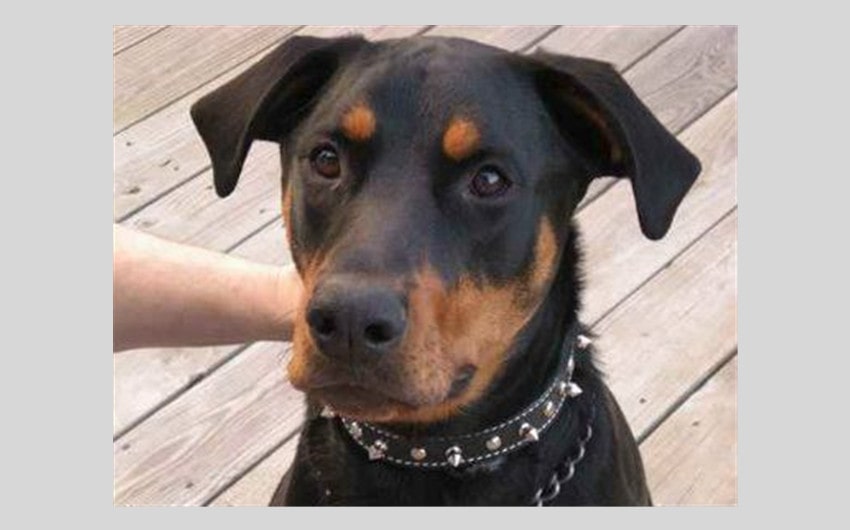
Image source: Pinterest
The Doberman Rottweiler mix, like any breed, is prone to certain health issues inherited from its parent breeds. Understanding the common health risks of both the Doberman and Rottweiler can help you take proactive measures to ensure your dog’s well-being. With proper care, a healthy diet, and regular veterinary check-ups, this mix can lead a long and fulfilling life.
Common Health Issues
While the Doberman Rottweiler mix is generally a healthy and robust dog, they may inherit some health problems from either the Doberman or Rottweiler side. Below are some of the most common health concerns to be aware of:
- Hip Dysplasia: Both Dobermans and Rottweilers are prone to hip dysplasia, a condition where the hip joint doesn’t develop properly, leading to arthritis or discomfort. Regular check-ups and maintaining a healthy weight can help minimize the risk of this condition.
- Elbow Dysplasia: Similar to hip dysplasia, elbow dysplasia is another joint issue that can affect large, active dogs like the Doberman Rottweiler mix. This condition can cause pain and lameness in the front legs.
- Dilated Cardiomyopathy (DCM): Dobermans, in particular, are known to be at risk for dilated cardiomyopathy, a heart condition that causes the heart to enlarge and weaken. Regular heart screenings can help detect this condition early.
- Aortic Stenosis: Rottweilers are more prone to heart issues like aortic stenosis, a narrowing of the heart’s aortic valve, which can lead to heart complications. Annual check-ups with a veterinarian can help monitor for early signs.
- Hypothyroidism: This condition occurs when the thyroid gland does not produce enough hormones, which can lead to weight gain, lethargy, and skin issues. It is more common in Rottweilers and may be passed down to the mix.
- Von Willebrand’s Disease: This is a bleeding disorder that affects Dobermans more than other breeds. Dogs with this condition may have trouble clotting blood after an injury, leading to excessive bleeding.
Lifespan
The average lifespan of a Doberman Rottweiler mix is between 10 and 12 years. With proper care, some dogs may live even longer. To help them live a long and healthy life, it’s important to maintain regular veterinary visits, a balanced diet, and a consistent exercise routine.
Tips for Maintaining Health
- Regular Vet Visits: Schedule regular check-ups with your veterinarian to monitor for any potential health issues. Early detection of conditions like heart disease or joint problems can significantly improve your dog’s quality of life.
- Proper Diet and Weight Management: Obesity can exacerbate joint issues like hip and elbow dysplasia, so it’s important to feed your Doberman Rottweiler mix a balanced diet that supports their high energy levels while maintaining a healthy weight.
- Exercise and Activity: Keeping your dog active helps not only with weight management but also with maintaining joint health and heart function. Regular exercise can help prevent or minimize the impact of hereditary conditions like hip dysplasia and heart disease.
- Genetic Testing: If you’re adopting a puppy, ask the breeder about genetic testing to screen for conditions like DCM or Von Willebrand’s Disease. Responsible breeders often test for these issues to reduce the likelihood of them being passed down to puppies.
- Dental Health: Like all dogs, dental hygiene is important. Regular tooth brushing and providing dental chews can help maintain healthy gums and teeth, preventing dental issues that can impact their overall health.
Preventive Care and Wellness
Preventive care is key to maintaining the health of a Doberman Rottweiler mix. Annual health screenings, vaccinations, and flea and tick prevention are all part of keeping your dog in optimal health. Paying attention to your dog’s diet and exercise, as well as monitoring their behavior for any signs of discomfort or illness, can ensure they live a long, active, and happy life.
Grooming and Maintenance

Image source: Pinterest
The Doberman Rottweiler mix is relatively low-maintenance when it comes to grooming, but there are still important grooming routines to follow to keep your dog looking and feeling their best. Regular grooming not only helps maintain their appearance but also promotes overall health and hygiene.
Coat Care
The Doberman Rottweiler mix typically inherits a short, dense coat from both parent breeds. Their coat is smooth, glossy, and often low-shedding, making them easier to maintain compared to long-haired breeds. However, they still shed moderately throughout the year, with increased shedding during seasonal changes (spring and fall).
To manage shedding and keep their coat healthy:
- Brushing: Brush their coat once or twice a week using a rubber curry brush or bristle brush. This helps remove loose hairs, distribute natural oils, and keep their coat shiny and clean.
- Bathing: Bathe your Doberman Rottweiler mix every 6 to 8 weeks, or as needed, depending on their level of activity and how dirty they get. Use a dog-specific shampoo to prevent skin irritation. Frequent bathing isn’t necessary unless they get especially dirty.
- Coat Check: While brushing, check for any skin irritations, bald spots, or unusual lumps, and address them promptly with a vet if needed.
Nail Trimming
Like all dogs, the Doberman Rottweiler mix’s nails should be trimmed regularly to prevent overgrowth and cracking. Active dogs may naturally wear down their nails through exercise, but it’s important to check them at least once a month. If you hear their nails clicking on hard surfaces, it’s time for a trim. Using a dog nail clipper or grinder, carefully trim the tips of their nails, avoiding the quick (the sensitive part that contains blood vessels).
Ear Cleaning
Due to their potential to inherit floppy ears from the Rottweiler side, the Doberman Rottweiler mix may be prone to ear infections if moisture and debris get trapped. Clean their ears once a week using a vet-approved ear cleaning solution and cotton balls or pads. Check for signs of infection such as redness, swelling, or a foul odor, and consult your vet if you notice any issues.
Dental Care
Dental hygiene is crucial for maintaining your dog’s overall health. Poor dental care can lead to gum disease, tooth decay, and even heart issues. Brush your Doberman Rottweiler mix’s teeth at least two to three times a week using a dog-specific toothbrush and toothpaste. Additionally, provide dental chews or toys to help clean their teeth and promote healthy gums.
Eye Care
While eye problems are not as common in this breed mix, it’s still important to check your dog’s eyes regularly. Wipe away any discharge from the corners of their eyes using a damp cloth or eye wipes, and consult a vet if you notice any redness, cloudiness, or excessive tearing.
Shedding and Allergies
Although the Doberman Rottweiler mix is not hypoallergenic, their low to moderate shedding makes them a manageable choice for many owners who don’t want excessive fur around the house. Regular brushing and vacuuming can help keep shedding under control. However, if you or a family member has allergies, it’s important to consider that this breed may still trigger allergic reactions due to their shedding and dander.
Overall Grooming Routine
A regular grooming routine for your Doberman Rottweiler mix includes:
- Brushing their coat 1-2 times per week.
- Bathing every 6-8 weeks or as needed.
- Nail trimming once a month or as needed.
- Ear cleaning once a week.
- Dental care 2-3 times a week.
- Eye cleaning as needed.
Is the Doberman Rottweiler Mix Right for You?
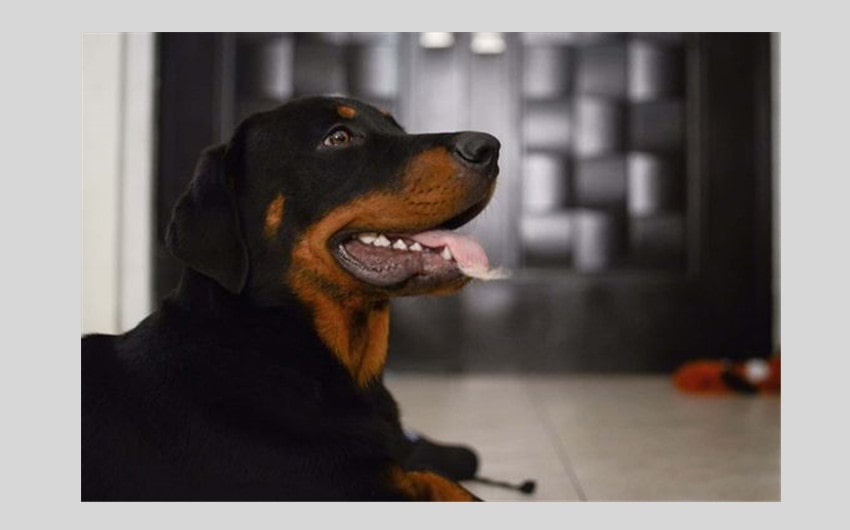
Image source: Pinterest
Before bringing a Doberman Rottweiler mix into your home, it’s important to assess whether this breed mix aligns with your lifestyle, experience, and living situation. This loyal and protective dog can be a great fit for the right owner, but they come with their own set of needs and challenges that should be carefully considered.
Active Lifestyle
The Doberman Rottweiler mix is an energetic dog that thrives in an active household. If you enjoy outdoor activities like hiking, jogging, or running, this breed will likely be a perfect match for you. Their high energy levels require regular exercise, and they will need a family that can commit to providing daily physical and mental stimulation. If you lead a sedentary lifestyle or are unable to commit to at least 60 to 90 minutes of exercise a day, this breed may not be the best fit for your home.
Space Requirements
While the Doberman Rottweiler mix can adapt to living in an apartment or smaller home, they do best in homes with access to a yard or outdoor space where they can run and play. A large, fenced-in yard allows them to safely burn off energy. If you live in an apartment, you’ll need to be committed to multiple daily walks and trips to a dog park to ensure they get enough exercise.
Experience with Dogs
The Doberman Rottweiler mix is best suited for experienced dog owners. Both parent breeds are known for their strong personalities, and the mix can sometimes inherit an independent or stubborn streak. Training and socialization are essential to ensuring they grow into well-behaved, balanced dogs.
This breed mix requires a confident and consistent leader who can establish boundaries and maintain structure. First-time dog owners may find the Doberman Rottweiler mix challenging, particularly if they are unfamiliar with training large, protective breeds.
Family Compatibility
The Doberman Rottweiler mix can make an excellent family dog, especially for families with older children who know how to interact with dogs. They are protective, loyal, and often form strong bonds with their family members.
However, their size and energy levels may be overwhelming for families with very young children, as they may accidentally knock over small kids during play. It’s also important to properly socialize them with children to ensure they understand how to behave around them.
Protective Nature
One of the key traits of a Doberman Rottweiler mix is their natural guarding instinct. This makes them excellent watchdogs, but it also means they can be suspicious of strangers. If you’re looking for a dog that will protect your home and family, this breed mix will not disappoint.
However, their protective nature can become a challenge if they are not properly trained or socialized. Without the right guidance, they may become overly cautious or reactive around unfamiliar people or animals. Early socialization and consistent training are crucial to helping them learn when to be protective and when to relax.
Commitment to Training
The Doberman Rottweiler mix is highly intelligent and trainable, but they need a strong and consistent leader. Training should begin early, focusing on obedience and socialization. Positive reinforcement works best with this breed, as harsh training methods can lead to fear or aggression.
Owners must be committed to ongoing training, especially to curb any tendencies toward dominance or protectiveness. If you enjoy working with and training dogs, this breed mix will be a rewarding companion.
Time and Attention
Doberman Rottweiler mixes are not a breed that enjoys being left alone for long periods. They are highly social dogs that thrive on companionship and interaction. If left alone for extended periods, they may develop separation anxiety or engage in destructive behaviors. If you have a busy schedule and can’t dedicate time to your dog, this mix may not be the best choice. They do best in homes where they are part of the family’s daily life and activities.
Other Pets
With proper socialization, the Doberman Rottweiler mix can get along with other pets. However, their strong protective instincts and potential dominance mean they should be introduced carefully to other dogs and animals in the household. Early socialization can help ensure they learn to coexist peacefully with other pets.
Is This Mix Right for You?
In summary, the Doberman Rottweiler mix is an excellent choice for active, experienced dog owners who are looking for a loyal, protective, and intelligent companion. They thrive in homes that can provide regular exercise, mental stimulation, and consistent training.
If you’re prepared to meet their needs, they will reward you with lifelong loyalty, affection, and a strong protective instinct. However, if you’re unable to commit to their exercise and training requirements, or if you live in a small space without the ability to provide outdoor activities, this breed mix may not be the best fit for your lifestyle.

